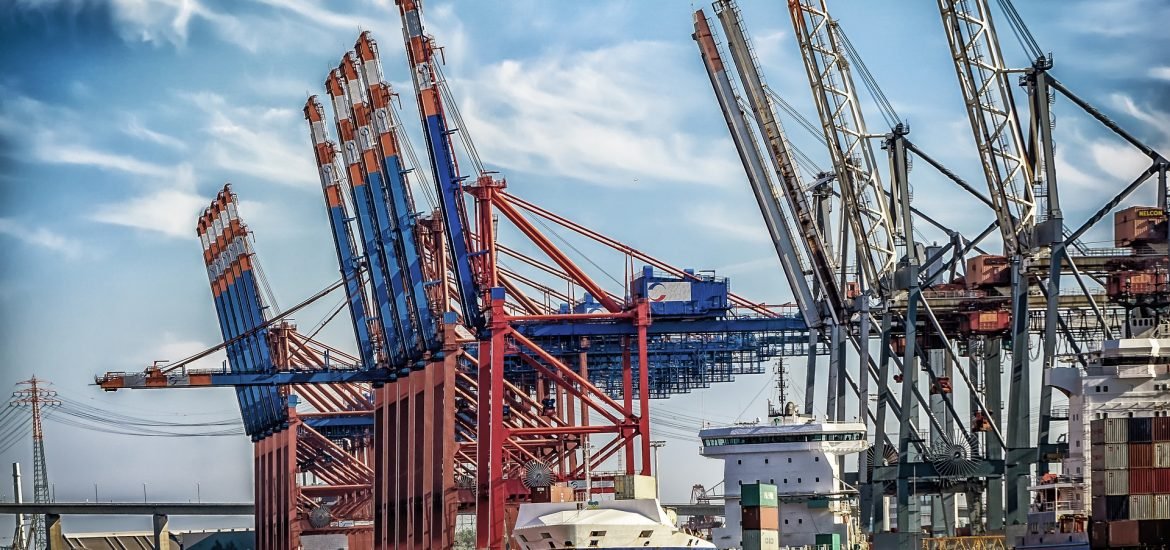
Europe’s aviation and shipping sectors must undergo “a massive shift in innovation” to meet sustainability targets, the European Environment Agency (EEA) warned in a report released on Wednesday.
In its latest Transport and Environment Reporting Mechanism (TERM) report, EEA said that incremental measures, such as improving fuel efficiency to cut emissions, would not be sufficient to meet European sustainability and greenhouse gas emissions targets.
The two sectors have grown significantly over the past few years, as economic growth has boosted international trade and travel. While this success has had significant societal and economic benefits, it has left a larger environmental footprint.
Aviation and shipping are responsible for a growing share of greenhouse gas emissions, and contribute significantly to regional and local air pollution and pressure on land and water resources. Within the European Union, greenhouse gas emissions from aviation have more than doubled since 1990, increasing over the past four years by about 2% each year, according to the report. If no further mitigation actions are taken, global aviation and shipping are expected to contribute nearly 40% of all carbon dioxide emissions by 2050.
Transportation is the main source of environmental noise in Europe. A recent EEA analysis showed that around 4.1 million people in Europe are exposed to aircraft noise above 55 decibels, which causes annoyance and sleep disturbance. The transportation sector also contributes to a variety of environmental pressures on ecosystems. The report notes that shipping is considered to be the main pathway of bio-invasion, whereby foreign species are released into new environments and disrupt local ecosystems.
The aviation and shipping sectors are facing increased scrutiny over their rising emissions and how they can meet EU decarbonisation goals. The EEA has said “a massive shift” in innovation and consumer behaviour will be crucial to reducing their long-term carbon footprint, noting the particular importance of adopting more green technologies to power aircraft and sea-faring cargo ships.
However, the sectors face numerous barriers to change. For example, drivers for demand in these sectors are often consumer led. Although reducing consumer demand may not a viable option in the short term, efforts to promote debate on sustainable travel and consumer behaviour, as well as changes to lifestyles and transport habits, can help reduce carbon emissions in the long term. The TERM report also said governments and industry can implement carbon-offset schemes, in which they “balance out” consumers’ carbon footprints by funding a carbon reduction project, such as renewable energy or reducing deforestation.
To further mitigate impacts associated with aviation and shipping, EEA recommended that governments encourage alternative modes of transport. The report notes that although this is in line with current policy priorities of the EU, additional policies need to be adopted to make such modes more competitive with low-cost airfares.
Shipping and aviation industries can also reduce their impact by investing in alternative fuels, including liquefied natural gas and methanol, and replacing fleets with newer, more energy efficient models. However, the EEA notes that “past investments in conventional airport and seaport infrastructure can delay the uptake of more sustainable technologies.” International aviation and maritime sectors also benefit from substantial tax exemptions on fossil fuels, which can discourage investments in alternative fuels and green technologies.
Because of these challenges, the TERM report emphasised that governments have a key role to play. EEA said governments can help drive change by “supporting investment in research, product standards and subsidies for new emerging technologies and to spur the sharing of data and information on the viability of new technologies.”
Today everyone understands that only with the help of well-established information it is possible to achieve advantages in the competition. Without modern hardware and software, it is impossible to achieve compliance with such information requirements as its relevance, speed, coverage of a sufficiently wide array of data and their reliability, as well as cost reduction. The costs of collecting and processing information should be in a certain ratio with the benefits received from it. Requires standardization of information and process steps. In the information world, this means, first of all, the establishment of uniform concepts and organizational structures. It requires the synchronization of material and information flows using standardized appropriate interfaces.
Calvin from from https://golden.com/profile/inchcape-shipping-services